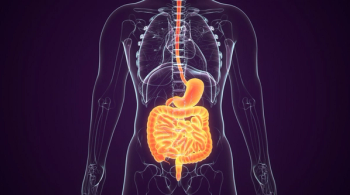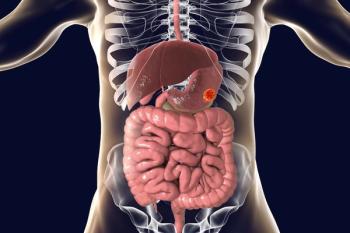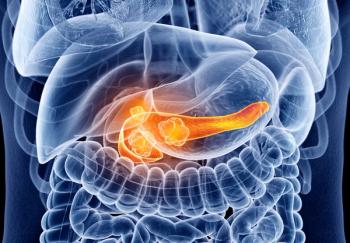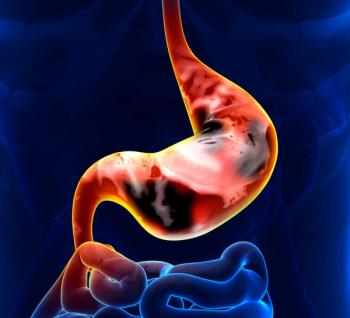
- ONCOLOGY Vol 14 No 1
- Volume 14
- Issue 1
Raltitrexed Combination Appears Promising in Advanced Colorectal Cancer
Preliminary clinical data presented at a poster session of the 1999 annual meeting of the American Society of Clinical Oncology (ASCO) revealed that a significant number of patients with advanced colorectal cancer respond to first-line treatment with raltitrexed (Tomudex) in combination with oxaliplatin. The response rate of 59% suggests that this regimen may be one of the more active combinations under current investigation for the disease.
Preliminary clinical data presented at a poster session of the 1999 annual meeting of the American Society of Clinical Oncology (ASCO) revealed that a significant number of patients with advanced colorectal cancer respond to first-line treatment with raltitrexed (Tomudex) in combination with oxaliplatin. The response rate of 59% suggests that this regimen may be one of the more active combinations under current investigation for the disease.
Physicians treating advanced colorectal cancer need new options for their patients especially as response rates to traditional therapies are generally in the 20% range, said lead investigator J. F. Seitz, MD, of the French Federation Nationale des Centres de Lutte Contre le Cancer, Marseille, France. The response rate achieved in this study represents a potentially exciting step forward which is worthy of further investigation.
Interim analysis of the phase II study also showed stable disease in 19 of the 59 patients evaluable for efficacy. The most frequent grade 3/4 toxicities reported were neutropenia (9% of cycles), elevated transaminase levels (8%), and nausea/vomiting (4%). The overall toxicity profile was judged to be manageable.
Phase I Trial Shows Efficacy as Second-Line Therapy
In another study also presented at a poster session, investigators assessed raltitrexed plus bolus fluorouracil (5-FU) as second-line therapy in patients with advanced colorectal cancer. Their results suggested that this combination compares favorably to other second-line regimens. This combination offers another therapeutic regimen that may provide significant palliation and improved survival following 5-FU failure, said the investigators.
In the phase I study from Memorial Sloan-Kettering, 37 patients (all but 5 of whom had not responded to a prior modulated 5-FU regimen) were given raltitrexed followed, after 24 hours, by a bolus injection of 5-FU. There was no evidence of a dose-response relationship, but a high proportion of patients showed disease stabilization. The most common toxicity was short-lived, nondose-limiting neutropenia (without fever). No grade 3 or 4 mucositis or diarrhea was observed.
Commenting on the significance of these data, Gary Schwartz, MD, of Memorial Sloan-Kettering, New York, said, Combination therapyand Tomudex combinations in particularhas been associated with major tumor regression, manageable toxicity, prolonged stable disease, and good quality of life.
Articles in this issue
almost 26 years ago
New Delivery System p53 Gene Holds Promise for Prostate Cancer Treatmentalmost 26 years ago
Interim Results of Trials of Chemotherapy Plus Electric Pulsesalmost 26 years ago
Experimental Compound Targets Molecular Cause of Leukemiaalmost 26 years ago
Changes in Medicare Fees for theYear 2000almost 26 years ago
Are ‘Platins’ on the Way Out in Regimens for NSCLC?almost 26 years ago
Margin Width the Key to Controlling DCIS of the Breastalmost 26 years ago
Endometrial Carcinoma and Precursors: Diagnosis and Treatmentalmost 26 years ago
First Phase II Results of Cisplatin/Epinephrine in Primary Liver CancerNewsletter
Stay up to date on recent advances in the multidisciplinary approach to cancer.















































































